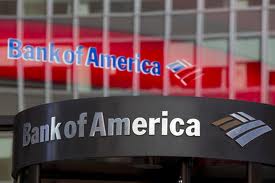 [/caption]
[/caption]
“The best thing about the settlement, frankly, is that it will be done,” said Stan Humphries, chief economist for Seattle-based Zillow Inc., a provider of home-sales data. “The shadow of the settlement hung over the market for a year now.”
Feb. 9 (Bloomberg) -- The $25 billion settlement with banks over foreclosure abuses may trigger a wave of home seizures, inflicting short-term pain on delinquent U.S. borrowers while making a long-term housing recovery more likely.
Lenders slowed the pace of foreclosures as they negotiated with attorneys general in all 50 states for more than a year over allegations of faulty and fraudulent paperwork used to repossess homes. With today’s agreement, banks are likely to resume property seizures.
“The best thing about the settlement, frankly, is that it will be done,” said Stan Humphries, chief economist for Seattle-based Zillow Inc., a provider of home-sales data. “The shadow of the settlement hung over the market for a year now.”
The backlog of foreclosures has trapped homeowners in properties they can no longer afford, depressed prices by increasing the number of abandoned properties and led banks to tighten mortgage credit standards because of uncertainty about their potential obligations. New foreclosures fell 46 percent in December from October 2010, when the investigation into the so- called robo-signing of mortgage documentation began, according to Irvine, California-based RealtyTrac Inc.
The agreement will direct $17 billion to writing down debt to buffer some homeowners from foreclosure. About 11 million U.S. homeowners owe more on their mortgages than their homes are worth, according to CoreLogic Inc., a Santa Ana, California- based real estate data provider. That has limited their ability to sell or refinance and reduced the incentive to keep paying.
Lowering Interest Rates
The agreement announced today includes $5 billion in cash for states to pay for foreclosure-prevention initiatives. Loan servicers will refinance $3 billion in refinancings to lower homeowners’ interest rates and pay about $1.5 billion to homeowners harmed by botched foreclosures.
The total value of the agreement with lenders including Citigroup Inc., Bank of America Corp. and Wells Fargo & Co. may grow to $40 billion if the next nine largest mortgage servicers sign on to the agreement, according to Housing and Urban Development Secretary Shaun Donovan. In a best-case scenario, if all banks participate fully, the deal might be worth $45 billion to homeowners and victims of foreclosure.
The money may have an added benefit: It will test the effectiveness of principal forgiveness in preventing defaults, and may spur a larger-scale program if it’s successful, Diggle said.
After a six-year slide in home prices, demand is showing signs of strengthening, bolstered by a jobless rate that fell to 8.3 percent last month. The number of Americans who signed contracts to buy previously owned homes in December held near a 19-month high, indicating that stabilization in the market that began in late 2011 may continue this year.
Strategic Default
Principal reductions may help cut the number of mortgage defaults by improving homeowners’ finances and reducing incentives for so-called strategic default, when homeowners walk away from a property because they have too much negative equity in their homes, according to a Federal Reserve report sent to Congress on Jan. 4.
U.S. homeowners have $750 billion in negative equity, Humphries said. The settlement will help the housing market “at the margins, but little more,” according to an analysis late last month by London-based Capital Economics of the impact of the settlement on housing.
“There has been a lot of discussion of principal reductions and whether that’s the one measure the U.S. housing market needs to get it going again,” Paul Diggle, a property economist at Capital Economics, said in a telephone interview this week. “That may well be the case. But the amounts of principal reductions under the settlement seem small.”
Drive Down Prices
The surge of home seizures may drive down home values, at least for a while, in a fragile market. The number of new foreclosure filings fell 34 percent last year, according to RealtyTrac, building up a backlog of homes that now may flood the market with low-cost properties.
“All of this will result in more foreclosure pain in the short term as some of the foreclosures that should have happened last year instead happen this year,” Daren Blomquist, a RealtyTrac vice president, said in an e-mail today.
About 1 million foreclosures with be completed this year, up 25 percent from 2011, according to the firm.
“I think there’ll be more price weakness, because we’ll see the number of distressed sales pick up,” said Mark Zandi, chief economist for Moody’s Analytics Inc. in West Chester, Pennsylvania. “But I think the price declines will be modest. I think the banks themselves are going to be very sensitive to market prices. I don’t think they’re just going to dump property. That wouldn’t be in their best interest.”
No Robo-Signing
Lenders are unlikely to flood the market because it will damage prices for all properties, according to Sam Khater, senior economist for CoreLogic. Banks may be limited by their own capacities to process foreclosures. The settlement prohibits the practice of robo-signing, which employed assembly lines of workers to sign thousands of foreclosure documents at a time without verifying them.
“You can’t dump all these properties at the same time,” Khater said. “That would be disastrous. You have to release them in a slow and measured fashion, so the market can absorb them.”
The settlement adds to a series of recently expanded government steps to protect consumers and encourage lenders to refinance homes and modify payment terms for homeowners facing foreclosure.



